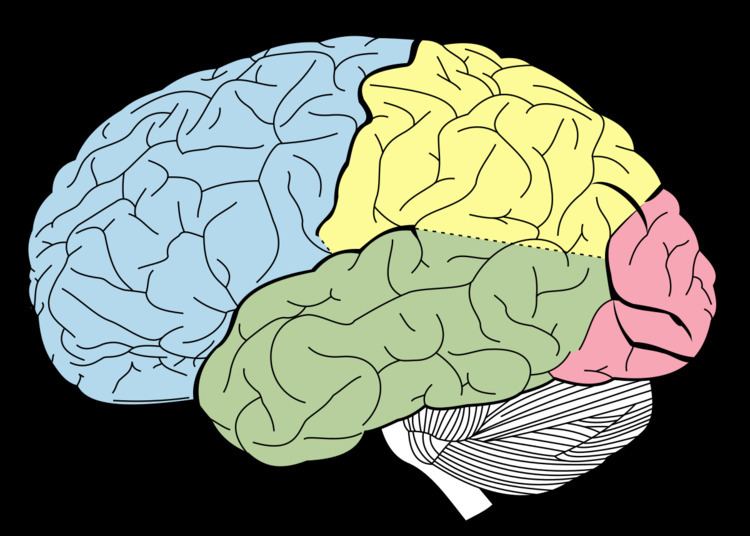NeuroNames hier-107 | Latin Lobus temporalis | |
 | ||
Artery Middle cerebral arteryPosterior cerebral artery MeSH A08.186.211.730.885.213.863 | ||
The temporal lobe is one of the four major lobes of the cerebral cortex in the brain of mammals. The temporal lobe is located beneath the lateral fissure on both cerebral hemispheres of the mammalian brain.
Contents
- Medial temporal lobe
- Visual memories
- Processing sensory input
- Language recognition
- New memories
- Unilateral temporal lesion
- Dominant hemisphere
- Non dominant hemisphere
- Bitemporal lesions additional features
- Damage
- Disorders
- References
The temporal lobe is involved in processing sensory input into derived meanings for the appropriate retention of visual memory, language comprehension, and emotion association.
Medial temporal lobe
The medial temporal lobe consists of structures that are vital for declarative or long-term memory. Declarative (denotative) or explicit memory is conscious memory divided into semantic memory (facts) and episodic memory (events). Medial temporal lobe structures that are critical for long-term memory include the hippocampus, along with the surrounding hippocampal region consisting of the perirhinal, parahippocampal, and entorhinal neocortical regions. The hippocampus is critical for memory formation, and the surrounding medial temporal cortex is currently theorized to be critical for memory storage. The prefrontal and visual cortices are also involved in explicit memory.
Research has shown that lesions in the hippocampus of monkeys results in limited impairment of function, whereas extensive lesions that include the hippocampus and the medial temporal cortex result in severe impairment.
Visual memories
The temporal lobe communicates with the hippocampus and plays a key role in the formation of explicit long-term memory modulated by the amygdala.
Processing sensory input
Language recognition
The temporal lobe holds the primary auditory cortex, which is important for the processing of semantics in both speech and vision in humans. Wernicke's area, which spans the region between temporal and parietal lobes, plays a key role (in tandem with Broca's area in the frontal lobe) in speech comprehension. The functions of the left temporal lobe are not limited to low-level perception but extend to comprehension, naming, and verbal memory.
New memories
The medial temporal lobes (near the sagittal plane) are thought to be involved in encoding declarative long term memory. The medial temporal lobes include the hippocampi, which are essential for memory storage, therefore damage to this area can result in impairment in new memory formation leading to permanent or temporary anterograde amnesia.
Unilateral temporal lesion
Dominant hemisphere
Non-dominant hemisphere
Bitemporal lesions (additional features)
Damage
Individuals who suffer from medial temporal lobe damage have a difficult time recalling visual stimuli. This neurotransmission deficit is due, not to lacking perception of visual stimuli but, to lacking perception of interpretation. The most common symptom of inferior temporal lobe damage is visual agnosia, which involves impairment in the identification of familiar objects. Another less common type of inferior temporal lobe damage is prosopagnosia which is an impairment in the recognition of faces and distinction of unique individual facial features.
Damage specifically to the anterior portion of the left temporal lobe can cause savant syndrome.
Disorders
Pick's disease, also known as frontotemporal amnesia, is caused by atrophy of the frontotemporal lobe. Emotional symptoms include mood changes, which the patient may be unaware of, including poor attention span and aggressive behavior towards themselves and/or others. Language symptoms include loss of speech, inability to read and/or write, loss of vocabulary and overall degeneration of motor ability.
Temporal lobe epilepsy is a chronic neurological condition characterized by recurrent seizures; symptoms include a variety of sensory (visual, auditory, olfactory, and gustation) hallucinations, as well as an inability to process semantic and episodic memories.
